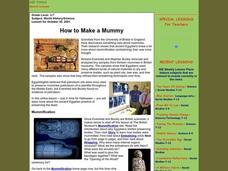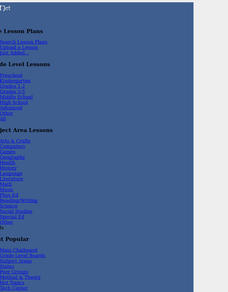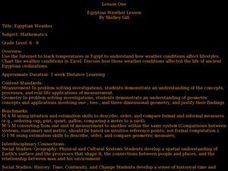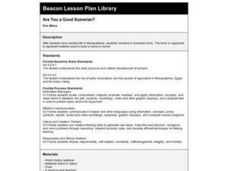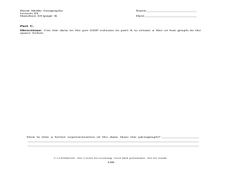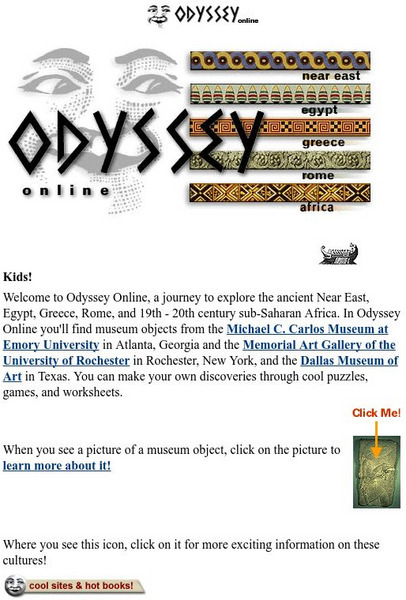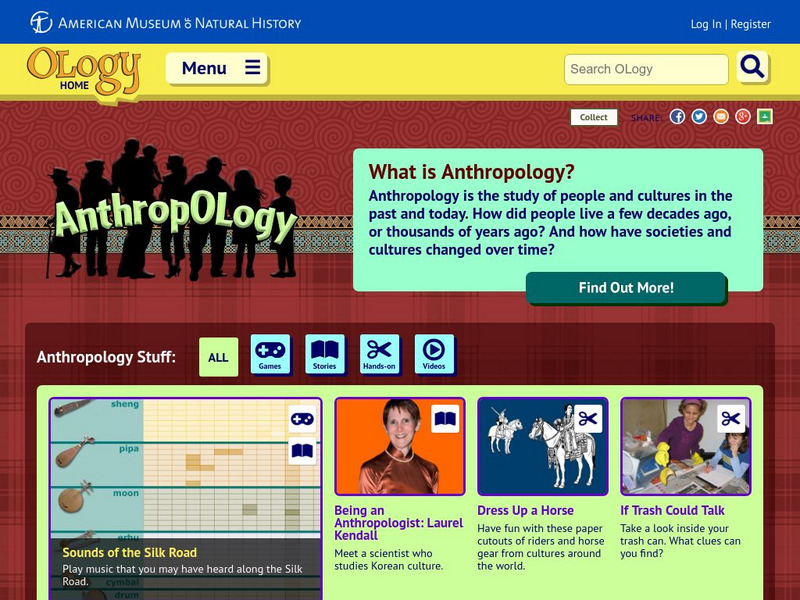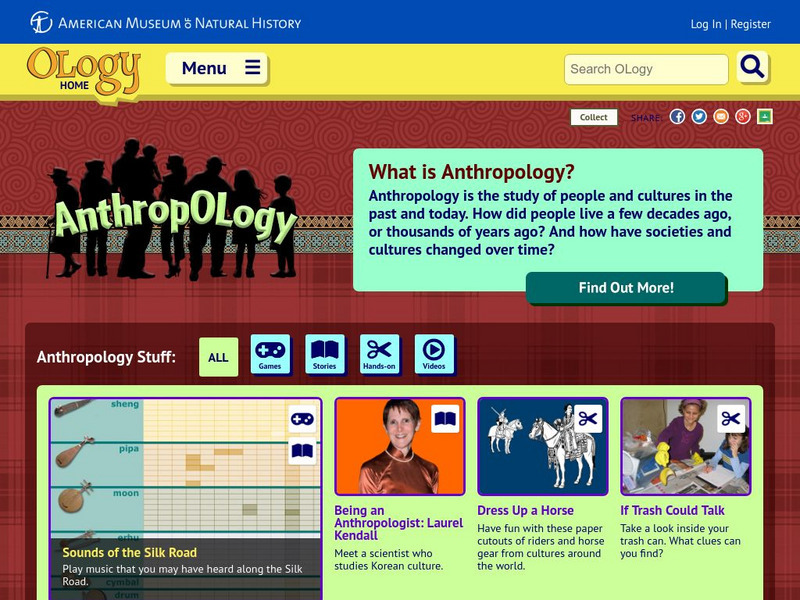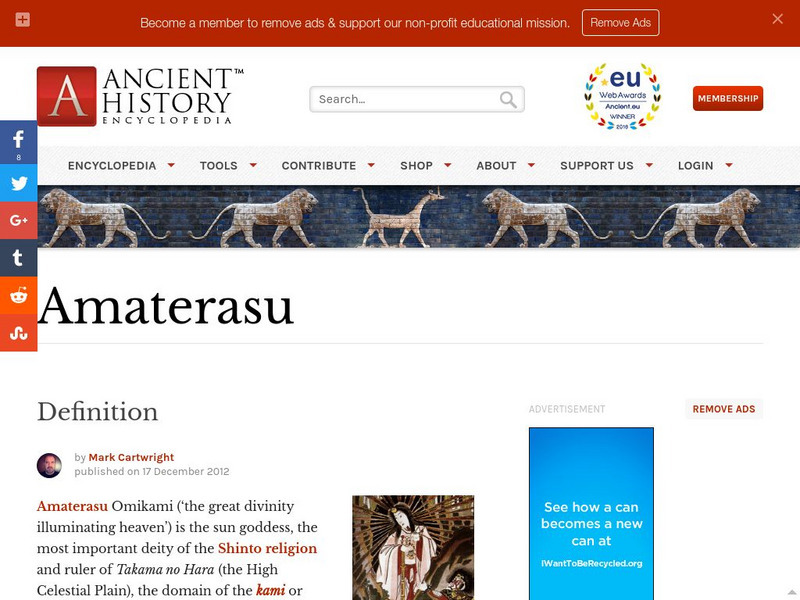Curated OER
How To Make a Mummy
Students explore the process of mummification through a British website. They read about why the process began and how it is done. They can follow along in the process in how to make a mummy as well.
Curated OER
Did Rome Fall, Or Was It Pushed?
Seventh graders work in teams to research the reasons for the fall of Rome and come to a conclusion of why it did.
Curated OER
Come On Over To Maya Place
Fifth graders analyze the Mayan culture. In this Mayan culture lesson, 5th graders study the Mayan culture noting similarities and differences between the Mayan culture and their own. Students examine hieroglyphic writing and the Mayan...
Curated OER
Medicine, Technology and Society
Students compare and contrast traditional Chinese and contemporary Western approaches to medicine. They bring a rational and scientific approach to the evaluation of alternative medicines. They study acupuncture from a Chinese and...
Curated OER
Competing For Food
Young scholars examine the hunting and gathering aspects of the Washoe culture. They are assigned roles, and participate in a simulation of surviving through the seasons by competing for food with other people and tribes.
Curated OER
The Mystery of Easter Island and Commas
In this commas and Easter Island worksheet, students read three uses for commas in a box at the top of the paper. They punctuate 12 sentences properly by adding commas and periods where they belong.
Curated OER
Africa's Climatic Regions
Students are introduced to the different climates and vegetation of Africa, and compare them to similar climatic regions found in the United States.
Curated OER
Egyptian Weather Lesson
Students chart temperatures in Egypt on spreadsheet to determine how weather conditions affect lifestyles.
Curated OER
The Glorious Revolution, the American Revolution, and the French Revolution
Students relate the Glorious Revolution, the American Revolution, and the French Revolution through web based research and scenarios.
Curated OER
Mummy Tales
Students research types of mummification. In this burial customs activity, students work in groups to research different types of mummies and present their research to the class. Students compare and contrast the types of mummification.
Curated OER
Neoclassical Influences
Students study how artists of the Neoclassical period were influenced by major historical events during the Enlightenment. They identify and analyze the Neoclassical style. discuss and identify the historical influences of Neoclassical...
Curated OER
Religion And Magic
Students examine the indigenous religions of China (Daoism) and Japan (Shinto) to see how magical beliefs and practices form an integral part of these religions. This instructional activity may be controversial.
Curated OER
Fujiyama
Students examine and discuss Mt. Fuji (Fujiyama) and its effect on the culture and philosophy of Japan. This high school lesson plan is ideal for a Social Studies, Humanities, or Asian Studies class.
Curated OER
The Planets Terra Firma
Students explore the theories of the creation of the universe and examine the properties of celestial bodies. They analyze the relationship between the sun, Earth and the other planets.
Curated OER
Yin And Yang
Students examine the symbols of change, Heaven and Earth, as expressed in
Chinese art and literature in this High School lesson plan. Evaluation is accomplished through a short, small-group research project.
Curated OER
Introduction to African Folklore
Students are read "Anansi the Spider" to begin their discussion on continents. Using a map, they locate the continent of Africa and the country of Ghana. They discover who the Ashanti people are and view examples of their artwork. They...
Curated OER
Are You a Good Sumerian?
Studetns, after studying life in Mesopotamia, create a Sumerian brick.
Curated OER
Population and Population Density
Students read and interpret graphs. In this population activity, students explore population and population density as they read several data graphs and respond to questions.
Penn Museum
Penn Museum: Ancient Greek World Men's Life: History of Warfare
This resource summarizes the history and nature of ancient Greek warfare and the role it played in the average man's life. It includes further links about chariots, weapons, and armor.
Emory University
Emory University: Odyssey Online
Odyssey Online is a resource for both students and teachers as they explore world mythology in reading, writing, history, and art classes. Providing sections on Near Eastern, Egyptian, Greek, Roman, and African mythology, Odyssey uses...
American Museum of Natural History
American Museum of Natural History: Anthropology
This resource allows students to discover the world of anthropology in a completely new way. The signficance of studying the human race is explained, along with interactive games, activities, and interviews. Design an ancient flowerpot,...
American Museum of Natural History
American Museum of Natural History: Anthropology
This resource allows students to discover the world of anthropology in a completely new way. The signficance of studying the human race is explained, along with interactive games, activities, and interviews. Design an ancient flowerpot,...
PBS
Pbs Teachers: Touring Ancient Egypt (Geography Lesson Plan)
A lesson for working with students to analyze the geographic features of ancient Egypt leading to an understanding of how Egypt's location, landscape, and natural resources helped it become the world's first superpower.
World History Encyclopedia
World History Encyclopedia: Amaterasu
Reference page on Amaterasu Omikami, provides information on the history and meaning of the most important deity in the Shinto religion. With links to furhter reading.
